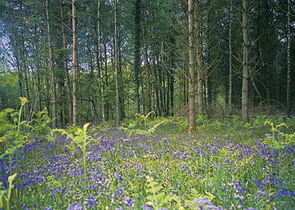Nature Conservation 4/2011 — 4. 11. 2011 — International Nature Conservation — Print article in pdf
Plesník J. & Pelc F.: Forest in Europe and in the World: Current Status and Future Prospects

The United Nations declared 2011 as the International Year of Forests to highlight an important role played by worlds forests in maintaining fundamental ecological processes as well as in providing livelihoods and supporting economic growth. Forests cover about 31% of the land on Earth, around 4 billion hectares, and they are more biologically diverse than any other land-based ecosystems.
More than 1.6 billion people depend in some way on forest for their livelihoods; forests are home to an estimated 300 million people around the world. While the global rate of forest cover loss has slowed somewhat in recent years as compared to the 1990s, partly it is still alarmingly high: yet each year, approx. 13 million hectares of the worlds forests are lost or degraded, mostly due to agricultural expansion. In addition, these basic ecosystems are disappearing partly because are undervalued, and our market economy fails to recognize ecosystem services provided by intact, healthy forest ecosystems. Forest biodiversity sustains human well-being through a multitude of ecosystem services, e.g.water purification, provision of oxygen, and spiritual and cultural benefits. 36% of the total forest area is covered by primary forests – i.e., forests comprised of native species where ecological processes have not been significantly disturbed by human activity. Thirteen percent of the worlds total forest area is under formal protection. There are 1.02 billion hectares of forest in Europe, which amount to 25% of the world total. Over the last 10 years, the forest area has expanded in all European regions and has gained 0.7 million hectares each year. Roughly 20% of all trees which were assessed in 2009 across Europe showed a mean defoliation of 25% or more and were thus classified as damaged or dead. Sustainable forest management needs to be matched by more effective governance and greater financial investments.

